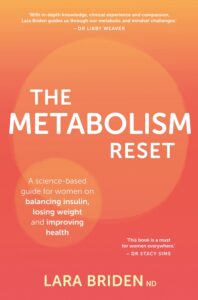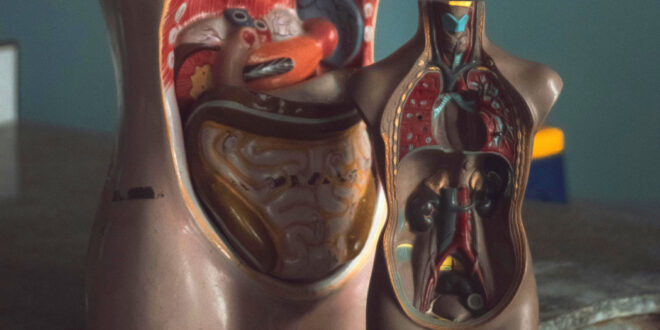 Extracted from The Metabolism Reset by Lara Briden, Macmillan Publishers, RRP $39.99
Extracted from The Metabolism Reset by Lara Briden, Macmillan Publishers, RRP $39.99
Mitochondria are the tiny bean-shaped cellular organs that produce most of the body’s energy. They may seem like an obscure detail but I invite you to pause and consider three basic facts about these fascinating creatures.
First, mitochondria are arguably a separate life form. (That’s why I called them ‘creatures’.) Specifically, they’re bacteria that formed a symbiotic relationship with another cell (our ancient ancestor) about 1.7 billion years ago. ‘We enslaved them,’ said one of my followers on social media. ‘Or, did they enslave us?’ I asked, referring to the scientific speculation that the entire body may simply be an infrastructure for mitochondria to feed and propagate themselves. That’s what I meant when I said arguably, mitochondria have you.
Second, mitochondria produce an astonishing amount of energy – way, way more than was ever possible for our pre-mitochondria ancestor cells. That’s a superpower. In fact, mitochondria were the inspiration for ‘the Force’ in the Star Wars movies.
Third, mitochondria are involved in much more than just energy. They’re arguably the ‘bosses of our cells’ because they sense everything (food, hormones, neurotransmitters and more), then respond by altering energy production. They also communicate with each other, both within cells and between cells. And mitochondria communicate directly with us by making hormones, neurotransmitters and regulating gene expression. Mitochondrially altered genes can even be passed on to offspring – which is one of the mechanisms of epigenetics (see page 21). By sensing, acting and communicating in such a variety of ways, mitochondria constitute what some scientists call a body-wide information processing system.
TIP: Most cells contain hundreds of mitochondria. Higher-energy cells (nerves, muscle and liver) contain thousands. That adds up to quadrillions (thousands of trillions) of mitochondria. The more you have, the better you’ll feel.
Inside mitochondria is where glucose and fat are burned, and – importantly – where metabolism switches between those two energy sources. That’s the metabolic flexibility we’ve been talking about and that’s why having more (and healthier) mitochondria is a powerful way to improve metabolic health.
What can go wrong with mitochondria?
The number and health of mitochondria tends to decline with age, stress, muscle loss and any metabolic obstacle. Fortunately, that process can be slowed or reversed by stimulating mitochondrial biogenesis, or the making of new mitochondria. Many of the health levers we’ll explore (such as building more muscle) work by stimulating mitochondrial biogenesis.
How are your mitochondria?
Signs of poor mitochondrial health include:
- muscle fatigue and slow walking gait
- neurological symptoms such as depression and migraines
- low VO2 max – the maximum amount of oxygen you use (or energy you burn) during intense exercise (see Chapter 5).
Muscle: your moving metabolic organ
Skeletal muscle (muscle that can be moved voluntarily) is absolutely packed with mitochondria, making it a huge metabolic (mitochondrial) organ. By creating a lot of energy, muscles fuel basal metabolic rate. They also release hormones called myokines, which regulate hunger, improve insulin sensitivity and communicate with the liver, brain (called the muscle–brain axis) and body fat. The myokine irisin can directly stimulate thermogenesis and fat burning.
TIP: For its size, the calf muscle burns through a lot of energy, making walking (which engages the calf muscle) a great way to improve metabolic health.
SPECIAL TOPIC: WHAT’S DIFFERENT ABOUT FEMALE MUSCLE?
Women have less muscle than men, but, at the same time, relatively bigger glute muscles – which is great, because glutes help with strength, stability and fat burning. Women also have more slow-twitch muscle fibres, which contain a lot of intracellular fat (fat inside cells) – making us naturally better at burning fat. For that reason, women are naturally a little more metabolically flexible than men. Note that fat inside cells (intracellular muscle fat) is healthy, but fat between cells (intercellular muscle or ectopic fat; see page 90) is not.
What can go wrong with muscle?
Sarcopenia – the loss of skeletal muscle mass and strength that occurs with age and menopause – can play a major role in metabolic dysfunction. But although a tendency to sarcopenia is natural, it’s not inevitable; you can always build more muscle.
TIP: Building muscle is a tried and true way to stay biologically young for your age.
How are your muscles?
Signs of sarcopenia include:
- a noticeable reduction in the size of your glutes or legs
- difficulty lifting objects, rising from a chair, climbing stairs or maintaining balance
- a slow walking gait.
See the coming chapters for all the ways to build muscle, including moving your body, eating enough protein and producing adequate levels of anabolic (muscle-building) hormones like testosterone, estrogen and growth hormone.








Join the Discussion
Type out your comment here:
You must be logged in to post a comment.